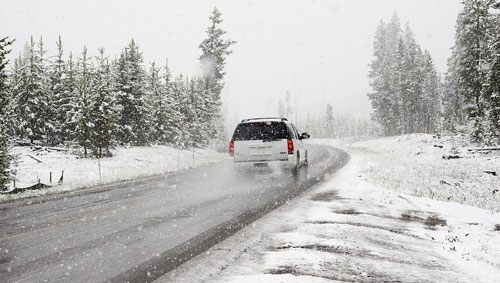With winter on the settling in for several months, it’s time to take steps toward winterizing your car. Knowing how to winterize your car will help you avoid unnecessary problems and will make you (and other drivers) safer on the road. Follow the tips below to understand how to winterize your car, and how you can have confidence in your car on the wintry roads.
Install Winter Windshield Wipers
Depending on the type of climate you live in, you should have your windshield wipers checked every three to six months, and replaced every six to twelve months. Having well-working windshield wipers on your vehicle will help keep your visibility clear in the rain, snow, and nasty wintry mix. Winter windshield wipers come with a heavy-duty rubber material that prevents ice from collecting on the wipers. However, be sure to switch your winter windshield wipers out once spring arrives, as you won’t need the heavier windshield wipers.
Replace Current Tires with Winter Tires
If you live in an area with frequent snowfall in the winter (or fall and spring!) months, it’s wise to consider putting snow tires on your automobile. Freezing temperatures affect the ability of non-snow tires to be able to grip the road, making your car prone to sliding. Snow tires have special engineering components that prevent them from hardening in freezing temperatures. In addition to the improved traction, snow tires will be able to handle driving through more types and higher quantities of snow.

Schedule Regular Maintenance Services
While it’s critical to maintain your car throughout all seasons of the year, there are certain car features that should be especially maintained during winter. Be sure to have your service station take a look at your car battery, as well as your cooling system. Car batteries are much more susceptible to malfunction when sitting in freezing temperatures. To avoid a dead battery, install a high performance battery that will take on a 600 CCA (cold cranking amps) rating.
Replace and Refill Automobile Fluids
To ensure you don’t have any emergency needs while on the road, take the proactive route by having all your fluid levels checked by your service station. When it comes to wiper fluid, don’t just make sure your car is simply refilled with regular wiper fluid, but switch to winter windshield wiper fluid that’s freeze-resistant.
Keep a Road-Emergency Kit in Your Car
While keeping an emergency roadside kit in your car year round is a wise idea, it’s especially important to keep one in your vehicle during winter months. Some items to include in your winter roadside kit include a good ice scraper, windshield wiper fluid, engine oil, jumper cables, as well as flashlights and flares in case you have to make some tuneups at night. Additionally, keep an extra pair of gloves and a blanket in the event that your heat becomes unavailable and you have to wait awhile for your car to start running again.
Maintain a Full Fuel Tank
Letting your gas tank drop down to the final drips is never a good idea, but a low gas tank can have additional adverse effects on your car during winter months. Winterize your car by maintaining a full gas tank—especially when your car will be sitting for an extended period of time. Shifting temperatures between above-freezing and freezing can cause condensation to develop on the inside of your fuel tank which can drip to the bottom of your tank and possibly freeze in your fuel lines. Frozen water in your fuel lines can eventually block the flow of gas to the rest of your car, causing serious and costly damages. Avoid this possibility by maintaining a full fuel tank.
Knowing the steps to take to winterize your car will help you and other drivers stay safer on the road, and you will avoid unnecessary repair costs by taking these precautionary measures. If your car won’t start, or you are involved in an accident, contact H&H Mobil for fast, efficient, and trustworthy towing service.